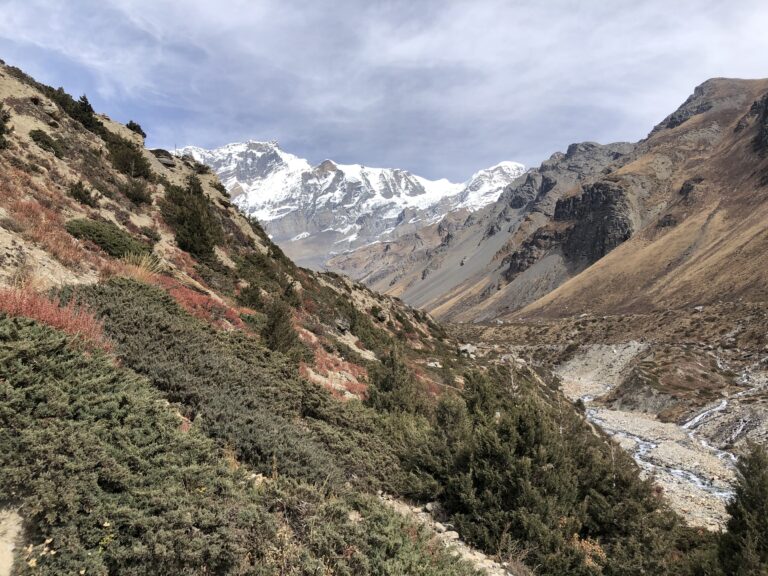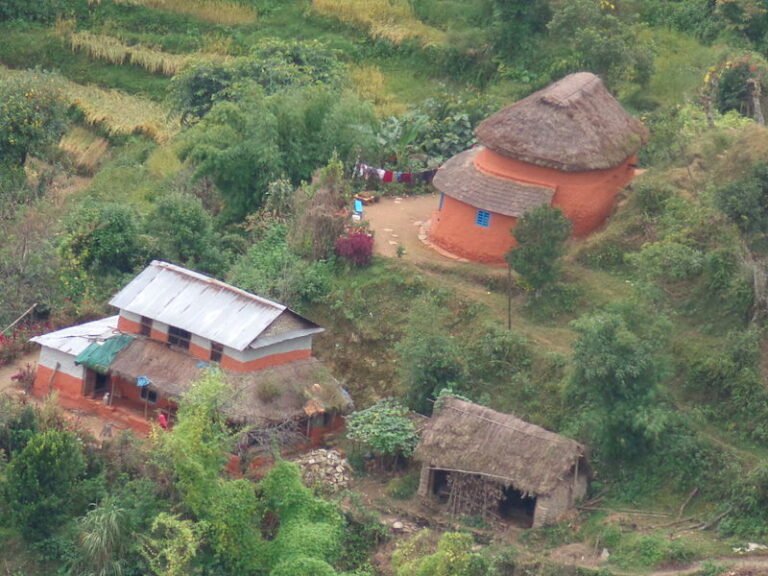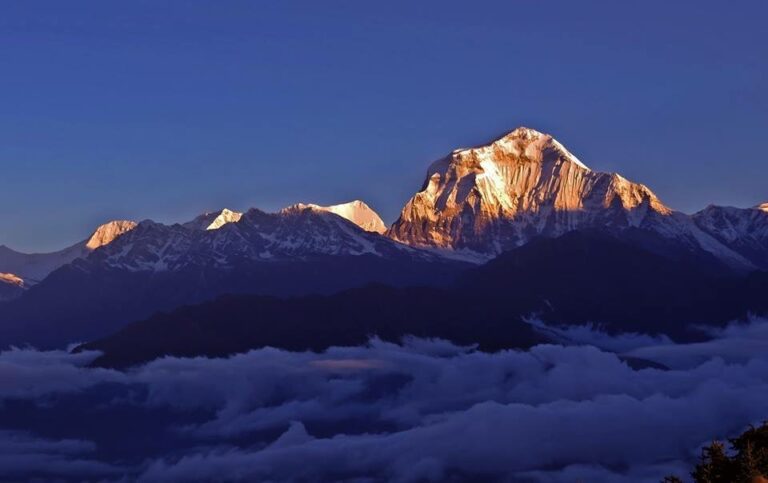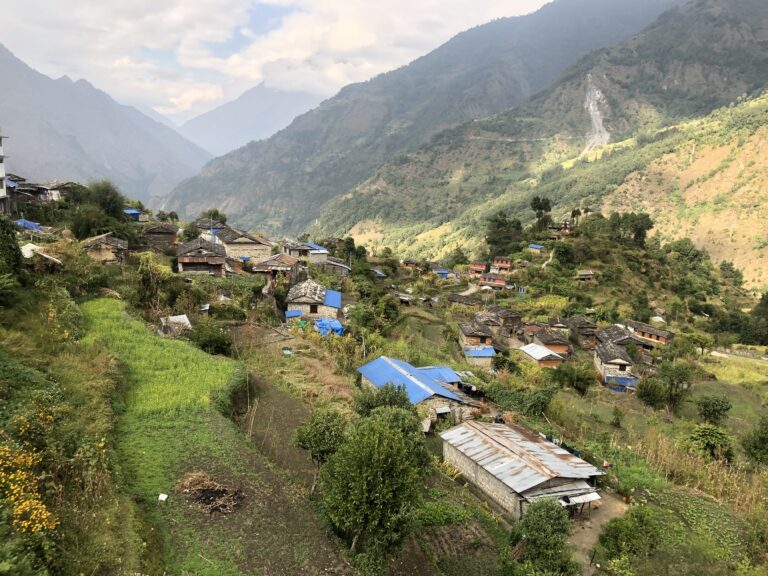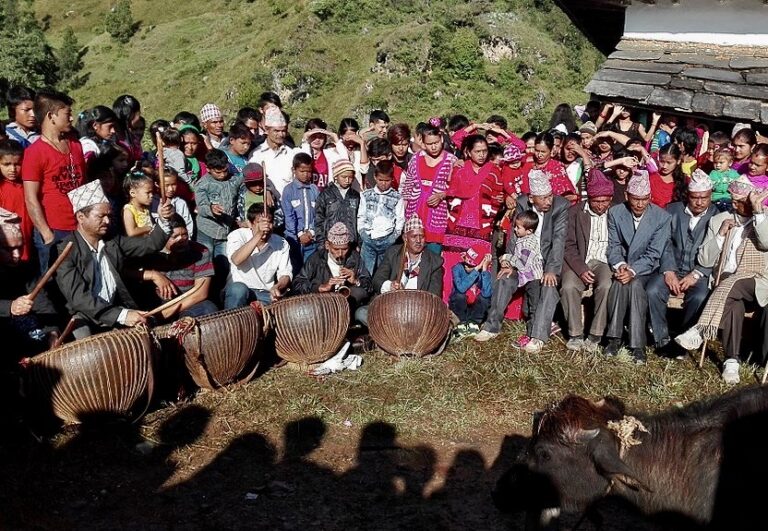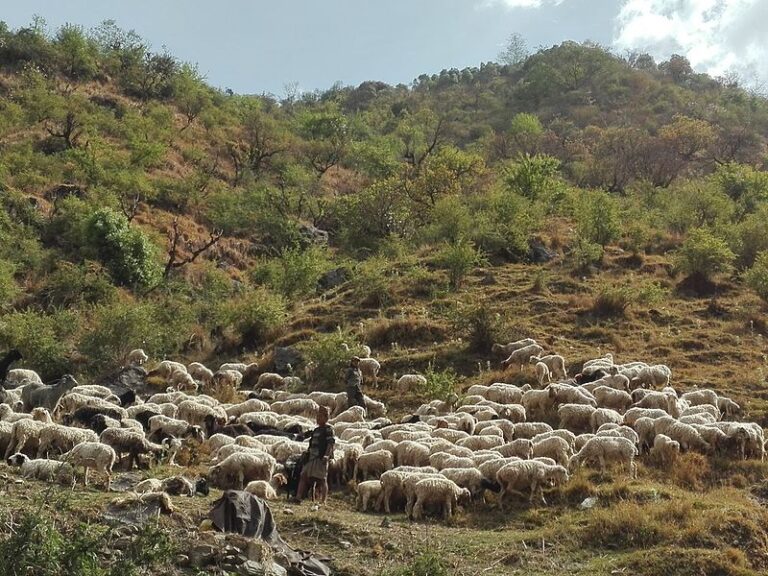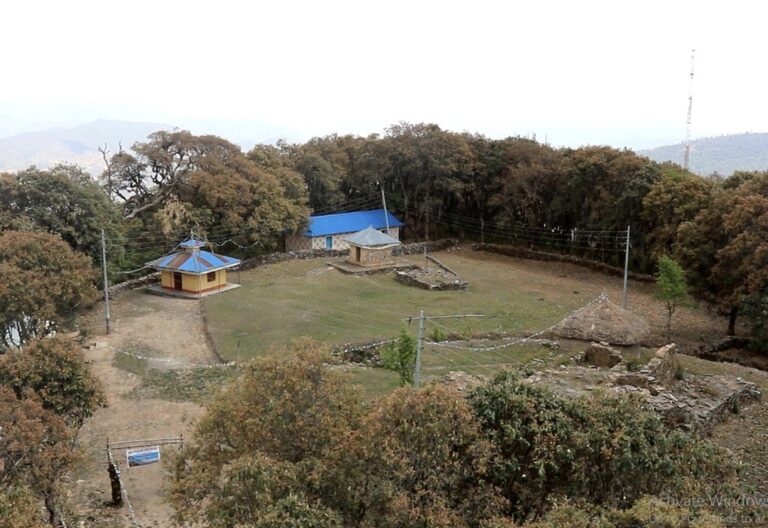Day 01 – Arrival and escort to the hotel – we will pick you up from the Tribhuwan international airport on your arrival date and escort to the hotel. After checked in the hotel; your tour guide will brief you about your trekking route, programs, trekking gear, and preparation.
Day 02 – City sightseeing in Kathmandu valley – we will explore some of the historical and pilgrimage sites in the Kathmandu valley like; Pashupatinath temple, Baudhanath stupa, Swayambhunath stupa and Kathmandu durbar square which are recorded as a world heritage sites by the UNESCO.
Day 03 – Transport to Pokhara (1400m.a.s.l) – Pokhara is 209 kilometers far from Kathmandu and the tourist bus takes approximately 7 hours to get Pokhara. During the driving period we will have admirable views of agricultural terraced field, green forest, Marshyangdi and Trishuli river valley, far view of Manaslu, Annapurna ranges, Ganesh Himal ranges and dozens of villages; which are settled over the vertical land. Pokhara is a paradise of Nepal, if the weather is clear then we can see panoramic views of Annapurna to the north side of Pokhara. sleep one overnight in Pokhara.
Day 04 – Drive to Beni Bazaar (830m.a.s.l) – 4 hours drive – We will drive approximately 4 hours to get Beni Bazaar which is the headquarters of Myagdi distinct located just bank of the Kali Gandaki river. During the driving period; we will pass some of the viewpoints that purpose to see alluring views of Machhapuchhre, Mardi Himal, south Annapurna, Hiu chili, Annapurna II, Gangapurna, Dhaulagiri Himal and it’s beautiful ranges. There are dozens of good guesthouses in Beni and offers to have delicious foods and comfortable bedrooms.
Day 05 – Tre to Darbang (1435m.a.s.l) – 6 hours walk -Darbang village is 24 kilometers far from Beni Bazaar. Most of the time we will walk on the gravel road with an admirable view of green landscapes, River valleys, rugged rocky hills, and paddy terraced field. Darbang is a beautiful hamlet; settlement of mixed community of all tribes- Magar, Chhantyal, Biswakarma, Darnal, kshetri, Brahmin, Thakali, and Gurung people. The Darbang village commands to see the splendid view of Dhaulagiri Himal. sleep one overnight in lodge.
Day 06 – Trek to Takam (1665m.a.s.l) – 4 hours walk – Takam is 13 kilometers far from Darbang village and takes about 4 hours to get there. The trail and scenery are the same as the previous day, passes through the agricultural terraced field, and cardamom garden with a view of green landscapes, waterfalls, river valley, and vistas of Dhaulagiri and Mukut Himal. Most of the time we will do short uphill and downhill trail that passes through the dozens of small villages and agricultural farms. Takam is a beautiful small village where the mother group of Chhantyal welcomes us by performing their cultural dance and traditional songs.
Day 07 – Trek to Lamsung (2250m.a.sl.) – 6 hours walk – From today; we will be very peace zone, we will meet a few locals and tourists due to entering the Himalayan area. The trail passes through the rugged rocky hills, deep gorges and forest of bamboo. Along the trail, we will have a fascinating view of Annapurna and Dhaulagiri mountain ranges. There are half dozens of basic guesthouses and homestays in Takam village to spend a joyful night.
Day 08 – Trek to Gurjaghat (3032m.a.s.l) – 7 hours walk – We will head towards Gurjaghat through the Pine forest with a grand view of Dhaulagiri mountain and Churen mountain range. Apart from mountain views; we will have awesome views of waterfalls, meadows, green landscapes, huge rocky hills, and deep gorges. Along the trekking trail; we will see many species of birds and butterflies, as well as the sound of barking deers, makes more joyful the trip.
Day 09 – Trek to Dhorpatan (2860m.a.s.l) – 6 hours walk – Today we will leaving Myagdi and entering another district called Baglung which is a former refugee camp of Tibetan people where also can be seen an airfield serviced by the Swiss government in 1950. The pleasant trail lead us to Dhorpatan doing by several up and downhill trail through the lush forest. The major attractions of the day would be the charm landscapes, waterfalls, meadows, rugged rocky hills, and agricultural terraced field. There are dozens of basic guesthouses and homestays in Dhorpatan village which offers us to have delicious meals and organic vegetables with warm hospitality.
Day 10 – Exploration of Dhorpatan hunting reserve – Dhorpatan hunting reserve is only one hunting reserve in Nepal which was established in 1987 in an area of 1325 square kilometers. There are 18 species of mammals, 137 species of birds and two species of reptiles are habitat in this reserved area. in a certain season, the license holder hunter has to pay a prescribed amount to hunt animals and birds but not allow to hunt preserved animals and birds such as snow-leopards, tigers, and pheasants. After the exploration of the Dhorpatan hunting reserve; we return back to the guesthouse and sleep one overnight again in the same place.
Day 11 – Trek to Nisi Dhor or (Nishel Dhor) (3015 m.a.s.l)- 5 hours walk – The journey begins with a gradual up via lush forest of mixed trees so it is great chance to see some wildlife like monkeys, deer, squirrel and many species of birds and butterflies. The trail and terrain will be similar to previous days, often up and downhill trail command us to see admirable landscapes, waterfalls, and meadows. After 5 hours of walk bring us to Nisi Dhor village which is a peaceful hamlet of mixed communities where we will spend our night with local people.
Day 12 – Trek to Tallo Shera (Lower Shera) (3230m.a.s.l) – 6 hours walk – Today we are leaving Baglung and entering Rukum district which is well-known as settlement of Kham Magar people who has their own languages, culture, tradition, costumes, and rituals that doesn’t match with other castes. The Tallo Shera village is very peaceful and calm but locals are badly affected during the civil war because the Maoist used it as a basecamp due to surrounding by dense forest where they can hide an easily from Nepal Army. There are half dozens of basic guesthouses and homestays which provides basic meals and bed for us.
Day 13 – Trek to Rujhi Khola(Rujhi stream) (3420 m.a.s.l) – 5 hours walk – we will do often up and downhill trail to get Rujhi Khola village that may takes approximately 5 to six hours. Most of the time we will walk through the forest of Bamboo, Rhododendron, and pine trees so the chirp sounds of birds, barking deer, flying butterflies, and massif view of Churen Himal, Sisne Himal, Putha Himal and Dhaulagiri Himal make fun and joyful walk. when we reach in Rujhi Khola we will have alluring landscapes because the Rukum is also known as a district of “52 Lakes and 53 hills”.
Day 14 – Trek to Thabang (3590 m.a.s.l) – 5 hours walk – We will head towards Thabang village that may takes approximately 5 hours from Rujhi Khola. The terrain and trail condition will be similar to previous days, the often up and down trail passes through the Rhododendron and bamboo forest. After 5 hours of walk we reach Thabang village which is one of the most affected villages by civil war because the mortar shell was dropped by helicopter during the battle of the Nepali army and Maoist. When we entering the Thabang village we can see depictions of Marx, Engels, Lenin, Stalin, and Mao in the entrance gate.
Day 15 – Trek to Jaljala( 3107 m.a.s.l) – 7 hours walk – Today is one of the prettiest day entire the whole trip because we are gaining the highest elevation of the trek that offers us to see splendid view of Sisne Himal, Putha Himal, Saipal Himal, Gurja Himal, Api Himal and Mount Dhaulagiri which is 8167 meters high above the sea level. we have to climb up approximately two hours to get a hilltop which is also known as Jaljala or Dharampani pass. After the top of the hill, we will head towards Jaljala village through the rugged terrain and lush forest to spend a joyful night in Jaljala.
Day 16 – Trek to Jelbang(1970m.a.s.l) – 7 hours walk – From today, most of the time we will walk on the descended trail through rugged terrain and sometimes the trail passes through lush forest with chirp sounds of birds, barking deer, flying butterflies and alluring vista of snowcapped mountains. Jelbang is settlements of mixed communities known as Brahmin, Kshetri, Magar, Darnal, and Biswakarma. Stay one overnight in Jelbang village.
Day 17 – Trek to Sulichaur (830 m.a.s.l) – 7 hours walk – We will head towards Sulichau village pass by dozens of Magar villages, River valley, agricultural terraced field and activities of local people who are working in their farms. After 7 hours of walk we will arrive in Sulichaur which is a newly developing small town located just the bank of the river. we will enjoy our last night of the trek with local people and trekking crews.
Day 18 – Drive back to Kathmandu – 9 hours drive – We will drive approximately 9 hours to get Kathmandu but still we enjoy with the view of the river valley, gorges, impressive places, and alluring mountain vistas from the window of the jeep. When we reach in Kathmandu we will have a hot shower, delicious meals, and deep rest.
Day 19 – Rest or extra day.
Day 20 – Final departure – After the successful trip of Guerrilla trek you will fly back to your homeland with great experience of Nepal, Nepalese culture, natural beauties, and memory of the trek that make you a storyteller among your friends, family and colleges.
